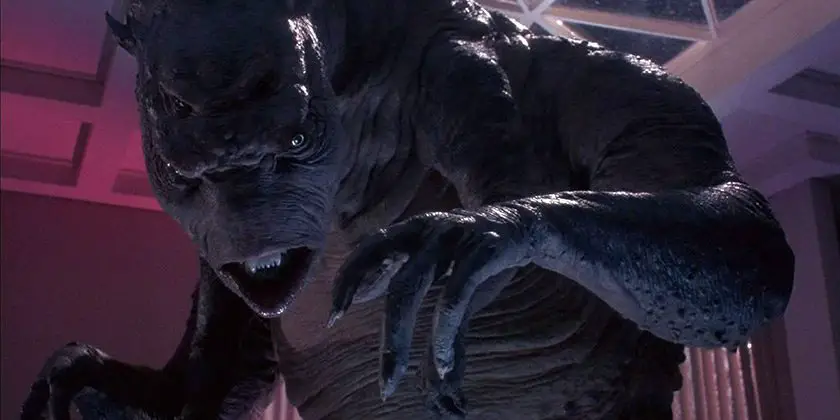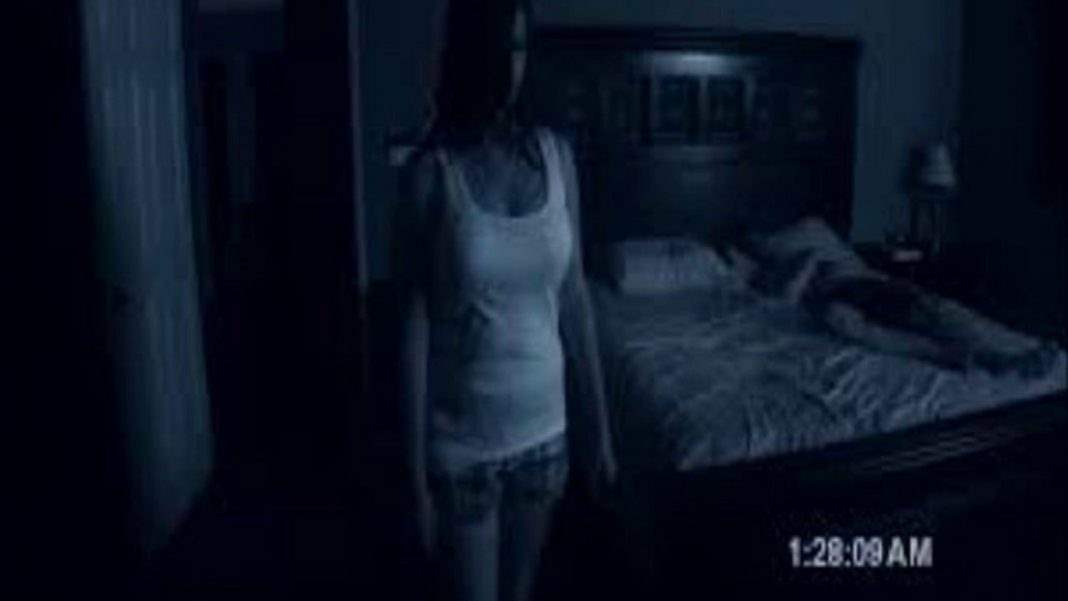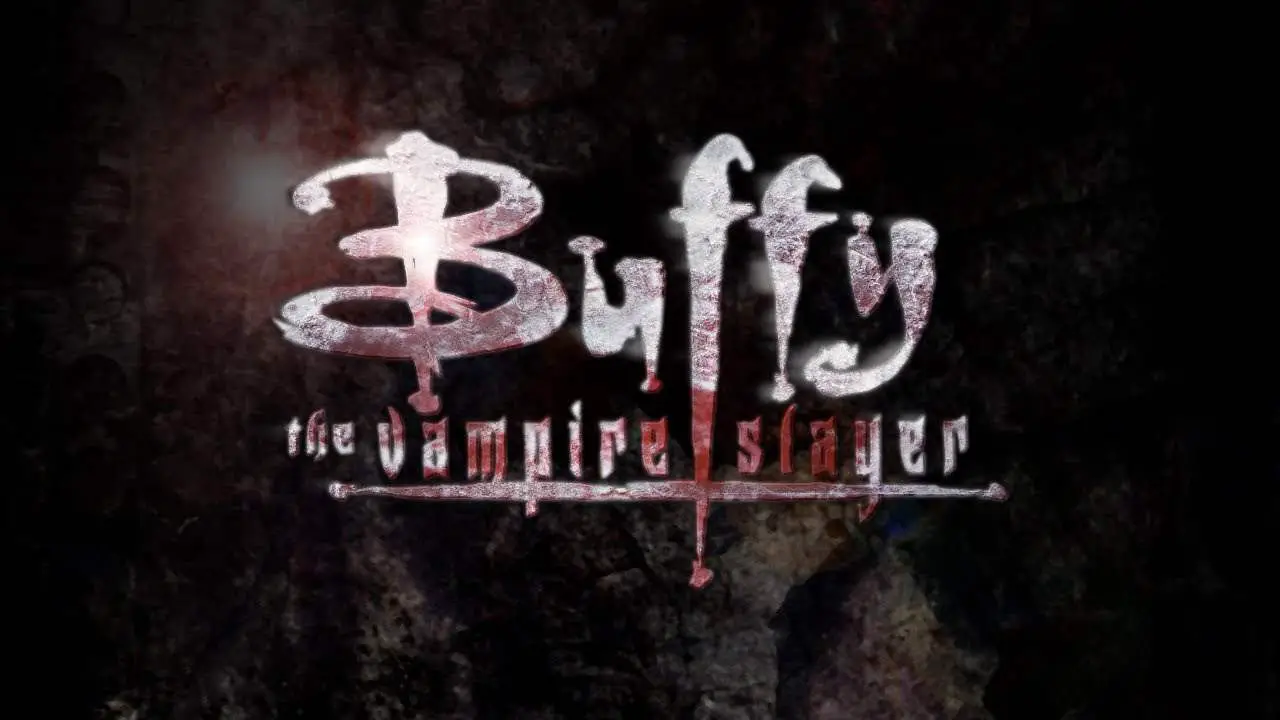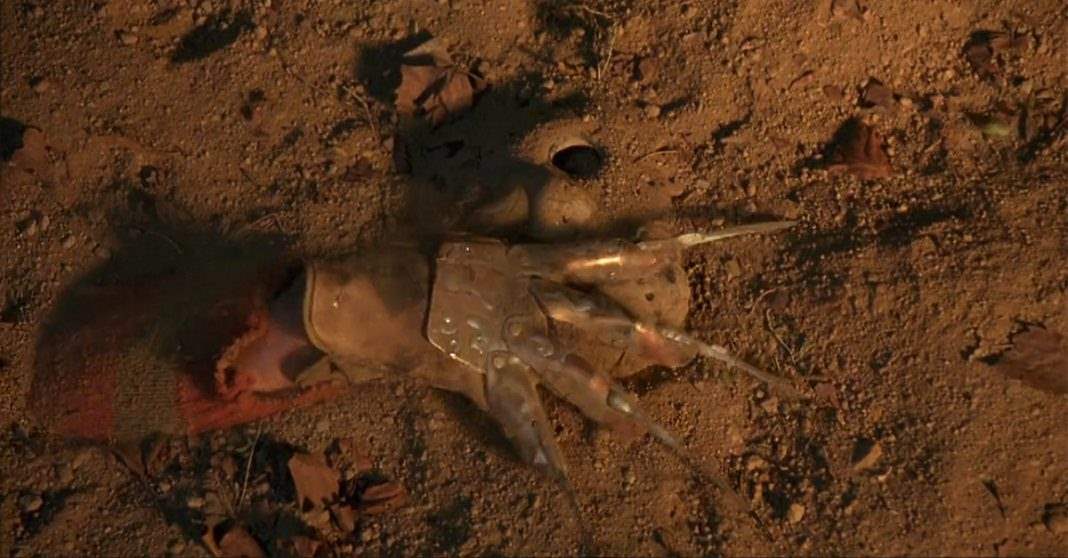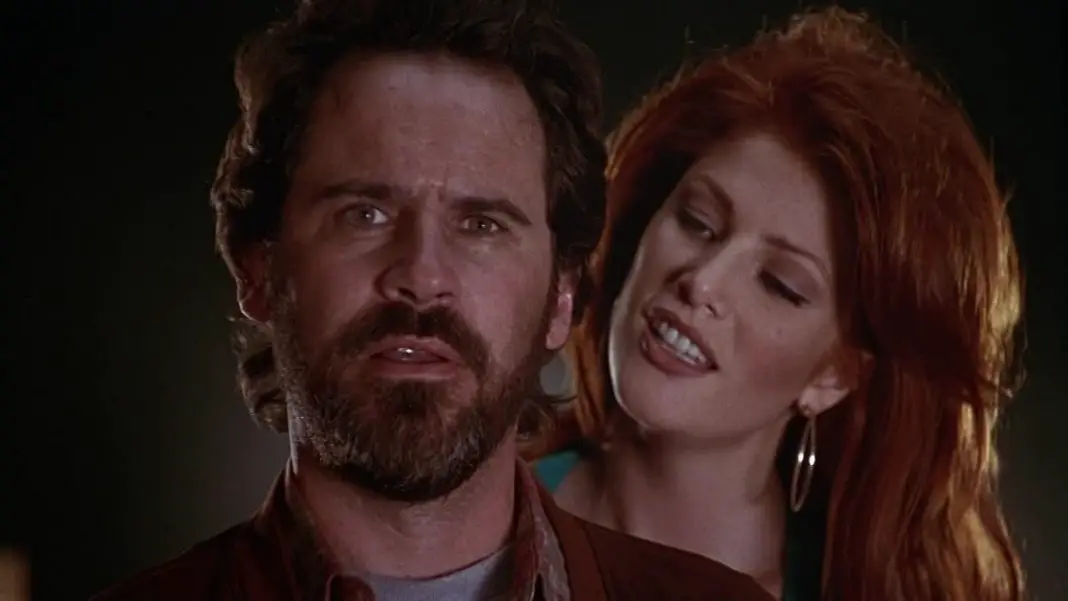Welcome to Dollar Double Feature, heavy metal horror edition. This feature is a digital version of the second run movie theaters that used to dot neighborhoods across the country. The floors were sticky, the popcorn stale, and the audience often talked back to the screen during an odd mix of six month old blockbusters, staff favorites, and whatever else was lying around. In an age when home video releases took months or even years, the dollar theater was your best bet for both retro replays and offbeat discoveries. In this installment, we’re taking a look at two very different takes on heavy metal horror.
Most people remember 1987’s PG-13 horror The Gate not from its modestly successful theatrical run, but from a long life in televised syndication. Glen (a very young Stephen Dorff) and his best friend Terry (Louis Tripp), accidentally open a gate to Hell by playing one of Terry’s heavy metal records. With the help of Glen’s older sister Al (Christa Denton) and the album’s liner notes, the trio have to close the portal in Glen’s backyard before his parents come home from vacation.
Related: 10 Horror Themed Bands You Should Be Listening To
Rewatching this film over 30 years later, what stuck out to me is the prim, almost Eisenhower era morality hiding under layers of mid 80’s time capsule tropes. Neon clad teens toss a party when mom isn’t home, but don’t get up to much aside from dancing to bad pop and telling campfire ghost stories. Glen’s parents prattle about Terry basically coming from a broken home because his mom had the nerve to die, implying that trauma is why he likes weird things like ghost stories and heavy metal. Demons are bested with wholesome hobbies like Bible study and model rockets.
Take out the slightly mixed up (the record summons demons when played forward) references to Satanic panic and an unfortunate 80’s tendency for casual homophobia in the dialog, and The Gate could just as easily have been made in 1957. Accordingly, the claymation demons and use of old school practical effects still pack the film’s biggest punch, and the familiarity of the plot elements do lend themselves to a certain strain of easy bake nostalgia for the person you were whenever you first saw it. However, that same lack of a more distinct stamp will always keep this attempt at heavy metal horror more “cult” than “classic”.
That brings us to the other half of this heavy metal horror double bill. Where The Gate saw immediate success, and an extended half life on television, 2017’s The Devil’s Candy struggled for almost 2 years to even find a distributor. While a critical hit at film festivals and amongst genre-focused press, the mainstream media dismissed the film almost immediately, clearly angry that a horror/heavy metal hybrid dared market itself as anything other than a camp guilty pleasure.
Related:The Devil’s Candy [Frightfest 2016 Review]
Struggling painter Jesse Hellman (Ethan Embry), his wife Astrid (Shiri Appleby) and daughter Zooey (Kiara Glasco) move into what they think is their dream home, despite the deaths of two previous tenants. The dream quickly becomes a nightmare when Jesse starts hearing demonic voices, and a mentally ill man named Ray (Pruitt Taylor Vince) refuses to stay away from what used to be his parents’ house.
The premise is rather pedestrian “house with a history” fare, but the barebones script gets its contours shaded in by a skilled cast of actors who fill in the gaps with some glorious character work. Astrid is a study in cautious, supportive optimism, even as Jesse starts to spiral out of control to fugue states and odd voices, every ounce of hurt and confusion written all over his face. Zooey is self possessed without being precocious, standing confident even in the face of an unexpected visit from a hulking stranger. As for Pruitt Taylor Vince’s Ray, he’s sinister yet oddly sympathetic, a psychopathic Lennie Small in a dirty red tracksuit. The obvious threat is made even more menacing by how tightly bonded and relatable the Hellmans are. Jesse paints boring bank murals to take some of the breadwinner pressure off Astrid, and bonds with daughter Zooey over headbanging and heavy music.
What begins as a tale of haunted houses and demonic possession, tosses tropes topsy turvy as it veers into more psychological and home invasion territory. The fantastic sound design should be credited as a main character. The Devil’s Candy is a deeply sound driven film, and not just in context of the songs on the soundtrack or Ray’s solitary guitar riffs. Every menacing rumble that fills both men’s heads, the slam of a door, a splatter of blood crosscut with the scrape of bristles on a palette, ambient and incidental noises get their own carefully considered cues to keep the sense of dread rising through a taut as razor wire 79 minutes.
Related: Five Demonic Possession Movies That Broke the Mold and Redefined the Sub-Genre
Where The Gate has a schoolmarm’s scold lying under a mostly family friendly framework, The Devil’s Candy has a wonderfully warm and humanist black heart hidden under a bloodily subversive speed metal riff. Art and music is what keeps both Jesse and Ray from giving in to their (possibly literal) demons, at least for a little while. Instead of castigating us for our interest in the darker parts of pop culture, the film shows us that the “weird” things we like, be they heavy metal or horror movies, can be the very same things that bring us closer together. In 30 years’ time, The Devil’s Candy will likely be canonized as a minor classic that took a bit longer than usual to find its cult.
